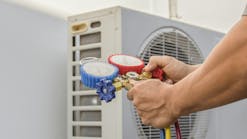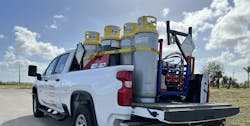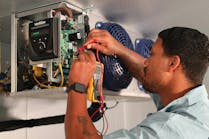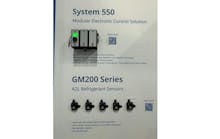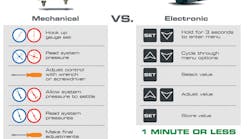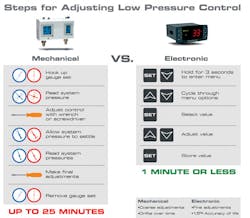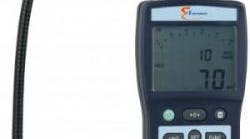Latest from Refrigeration
The HVACR industry has traditionally used mechanical pressure switches for system control and the protection of refrigeration equipment. These switches regulate critical functions within a refrigeration system and are essential to its proper operation. Low-pressure switches are commonly used to control compressor operation or act as a low-limit control.
High-pressure controls sense compressor discharge pressure and can stop the compressor in case of excessively high pressures. Dual-pressure controls are comprised of low pressure and high-pressure controls mounted in a single housing, with a single switch operated by either control. Other functions of mechanical pressure switches include condenser fan cycling and oil pressure safety control.
While mechanical pressure switches have served the industry well for many years, and seasoned technicians are comfortable with them, technology advancements are beginning to phase them out in favor of electronic controls. This shift mirrors advancements across dozens of other industries, where electronic technology has repeatedly replaced mechanical components or operations.
With electronics offering increased reliability, simplified servicing, and greater operating flexibility, it’s simple to understand why wholesalers and technicians in the HVACR field are making the switch to electronic controls.
This transition can be seen in changes being made in product manufacturing. For example, Emerson Climate Technologies began transitioning from mechanical controls to the electronic version in refrigeration equipment in 2012. That’s when the company began integrating electronic controllers onto Copeland condensing units.
In fact, Emerson reports there are more than 60,000 of its electronic controllers in the field today and contractors are beginning to realize the benefits of this change.
Technicians, in particular, benefit from the ease of set-up. Dan Whitten of Rosetown Central Refrigeration & Air Conditioning Ltd. has experience with electronic controllers and says he understands the time savings it can yield. “Our technician was very impressed by the accuracy of the pressure readings compared to his service gauges.”
Rosetown, located in Brampton, Ontario, Canada, is a diversified HVACR contractor with extensive experience (since 1966) in system design, project management, installation, and service to heating, air conditioning and refrigeration systems for commercial and industrial businesses.
Whitten says he sees this move as a way to help contractors be more productive. He explains that mechanical pressure controls require around 30 minutes for set-up and can be complicated with set point drift and difficult-to-read settings. An electronic control requires one minute or less to set up. In addition to the obvious time-savings, the device can be programmed with the touch of a button, rather than using cumbersome tools or gauges.
For wholesalers or distributors, inventory levels are improved because the electronic controller makes it possible to provide a single condensing unit that operates with multiple refrigerants. Spokespeople at Emerson say the integration of electronic controls across its condensing unit line reduced the number of models by 45% — alleviating inventory burden for wholesalers without impacting their service levels or the range of product available to support customers.
Whitten adds that contractors who install refrigeration systems that include these electronic controllers will find them to be more reliable due to fewer components. They even help reduce the chance of refrigerant leakage, he adds.
This shift in technology is quickly affecting the industry as it moves towards electronics, and technicians in the field should be prepared to manage these changes. Technicians can begin by educating themselves about the technology and learning how to install condensing units equipped with electronics. Contractors can also contact their nearest wholesaler or distributor to learn more about these types of electronics.
More to Come
Next month, we’ll hear from other contractors in the field as they weigh-in on the shift from mechanical to electronic controls.



